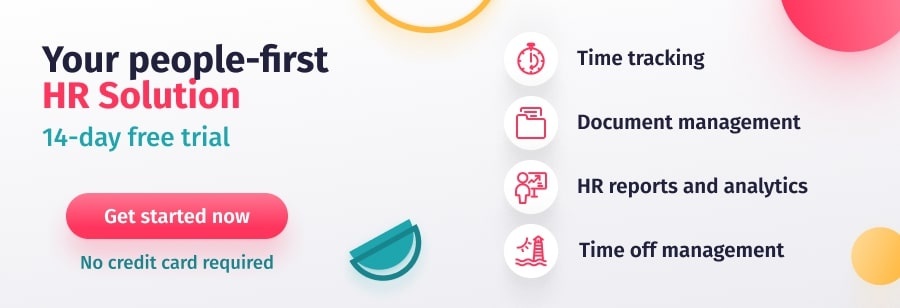This has been a landmark year for cultural awareness, as growing movements in the U.S. and around the world call attention to social justice issues and the importance of diversity and inclusion. Cultural competence —the willingness and ability to understand, appreciate, and interact with people from other cultures or belief systems— has never been more important.
As organizations invest in creating a diverse workforce, they must create an inclusive atmosphere that is open to and accepting of a variety of experiences. In this post, we’ll cover everything you need to know about cultivating a culturally competent workforce.
- Cultural Competence Definition
- The Importance of Cultural Competence
- 3 Companies With Great Cultural Competence
- What Happens to Businesses That Are Not Culturally Competent
- Tips for Cultural Competency Training
What is the Real Cultural Competence Meaning?
The cultural competence definition refers to our ability to build understanding with others, respect different cultural perspectives, and create equal opportunities. It means valuing diversity for the richness and creativity it brings to a community.
A culturally competent workplace is one that understands and celebrates cultural differences. Further, it is a place where both diversity and inclusion are a major part of the organization’s business strategy and where workers and customers of different backgrounds feel welcome. Cultural competence means people of different races, religions, genders, sexual identities and ages are represented and respected. In the end, employees are able to collaborate across these boundaries and to leverage their differences as strengths.
In order to be culturally competent, we must be aware of our own cultural values and world view. If we can recognize our own assumptions and biases as subjective, we can bring empathy and understanding to our interactions. Businesses hoping to create a culturally competent workforce need to start by addressing systemic and structural issues within their company. They can also implement training and support measures to make sure employees are on the same page.
Cultural Competence Importance
The benefits of cultural competence are well-documented. For example, research shows that inclusive teams make better business decisions up to 87% of the time. Even more impressive, companies in the top quartile for racial and ethnic diversity are more likely to have financial returns greater than their industry mean.
Why is diversity so integral to success? Unconscious biases typically derail good decision-making. When a diverse group works together, they can help keep each other’s biases in check and make smarter decisions as a team.
The U.S. is diversifying fast, with the Census Bureau estimating that nearly four out of ten Americans identify with a race other than white. Businesses that cannot reflect these demographics will fall behind those that can. By implementing cultural competence initiatives, organizations will be able to take advantage of other perspectives and compete in a global marketplace. Plus, they’ll have more satisfied employees, a better brand reputation, and a more innovative workforce.
Examples of Cultural Competence
Diversity isn’t just a passing trend. Businesses have been investing in cultural competence for a long time and are now seeing the fruit of their labor. Here are some of the best cultural competence examples in the workplace.
Alibaba Group
Alibaba Group, the world’s biggest e-commerce company that hosts millions of merchants and serves hundreds of millions of users. During a major shopping holiday in China, Alibaba was processing 583,000 orders per second.
What did Alibaba Group Chairman Jack Ma call the “secret sauce” behind the company’s success? Women. More than one-third of Alibaba Group’s founders were women, and there remains a similar percentage in senior executive roles. Throughout the company, women represent almost 50 percent of employees.
Research shows that gender diversity leads to more innovative thinking and better decision-making. Alibaba provides a good case study.
L’Oreal
A Forbes Top Multinational Performer, beauty company L’Oréal has a presence in 150 countries on five continents. As such, multicultural diversity is at the core of this company’s success.
L’Oreal has initiatives supporting employees of different genders, abilities, socio-economic origins, sexuality, and ages. In the US, L’Oreal’s LGBTQ employee resource group, OUT@L’Oréal, has won L’Oréal a spot on the list of “Best Places to Work for LGBTQ Employees” and obtained a 100 on the Human Rights Campaign Corporate Equity Index.
The company is also a top performer when it comes to gender equality: Women account for 69 percent of the workforce and 53 percent of key positions.
This tech giant was in hot water over the summer when its 2020 diversity report fell short of expectations. The report showed that just 2.6% of the company’s leadership were black, the same figure which it had reported the year before. CMO Lorraine Twohill said that she regretted being so focused on hiring diverse workers without sufficiently supporting “retention, career progression, inclusiveness.”
Now Google has set some big goals to boost diversity, such as expanding investments in places like Atlanta, Washington DC, Chicago, and London. It will also create a task force to “develop concrete recommendations and proposals for accountability across all of the areas that affect the Black+ Googler experience.” It is good to see this company taking accountability for past mistakes and taking a step in the right direction.

The Effects of Not Being Culturally Competent
A business that is not culturally competent, in short, will make worse decisions than a business that is. It will have less innovation, less creativity, and ultimately, be less profitable.
Further, a business that doesn’t prioritize diversity will have a worse brand reputation and won’t be able to attract top talent. Such an organization would not only have a smaller pool of potential employees to hire from. It would also have difficulty retaining employees, who will depart for a more open and inclusive environment. Why would employees want to work in a place that doesn’t accept and value their differences?
The remaining team members will be demotivated by their departing colleagues, and productivity will stay low.
It is important to invest the time and resources in developing a culturally competent atmosphere. This is not only because doing so will help your organization to succeed. It is also because not doing so may guarantee your organization will fail.
How to Implement Cultural Competency Training
People are naturally inclined to label people that are different from themselves, especially when we don’t understand. That’s where cultural competence training can transform organizations. Training teaches how to recognize our own approach while appreciating and valuing different perspectives and different ways of communicating or behaving. Here are three key steps to cover in cultural competence training.
Awareness of Self
The first element of cultural competence is awareness of the self and one’s own culture. Once individuals see that their own perspective is subjective, they may not be as quick to judge another’s.
Recognizing Norms and Values
Next, ask people to think of an interaction that left them feeling uncomfortable. How did the other person’s behavior depart from their own cultural norms? Be careful to watch out for stereotypes here— how may unconscious biases have affected the situation?
Acknowledging Differences Through Cultural Competence
Use this opportunity to think about a time when differences have posed a challenge– and when they have facilitated success. We must “unlearn” the stereotypes and biases we have as a culture. Non-judgementally acknowledging difference is a great place to start.
Cultural competence should be a foundational part of every business strategy. Make sure you are giving it the attention it deserves.
Step up your company’s digital transformation with the help of Factorial HR – Try it for free.


